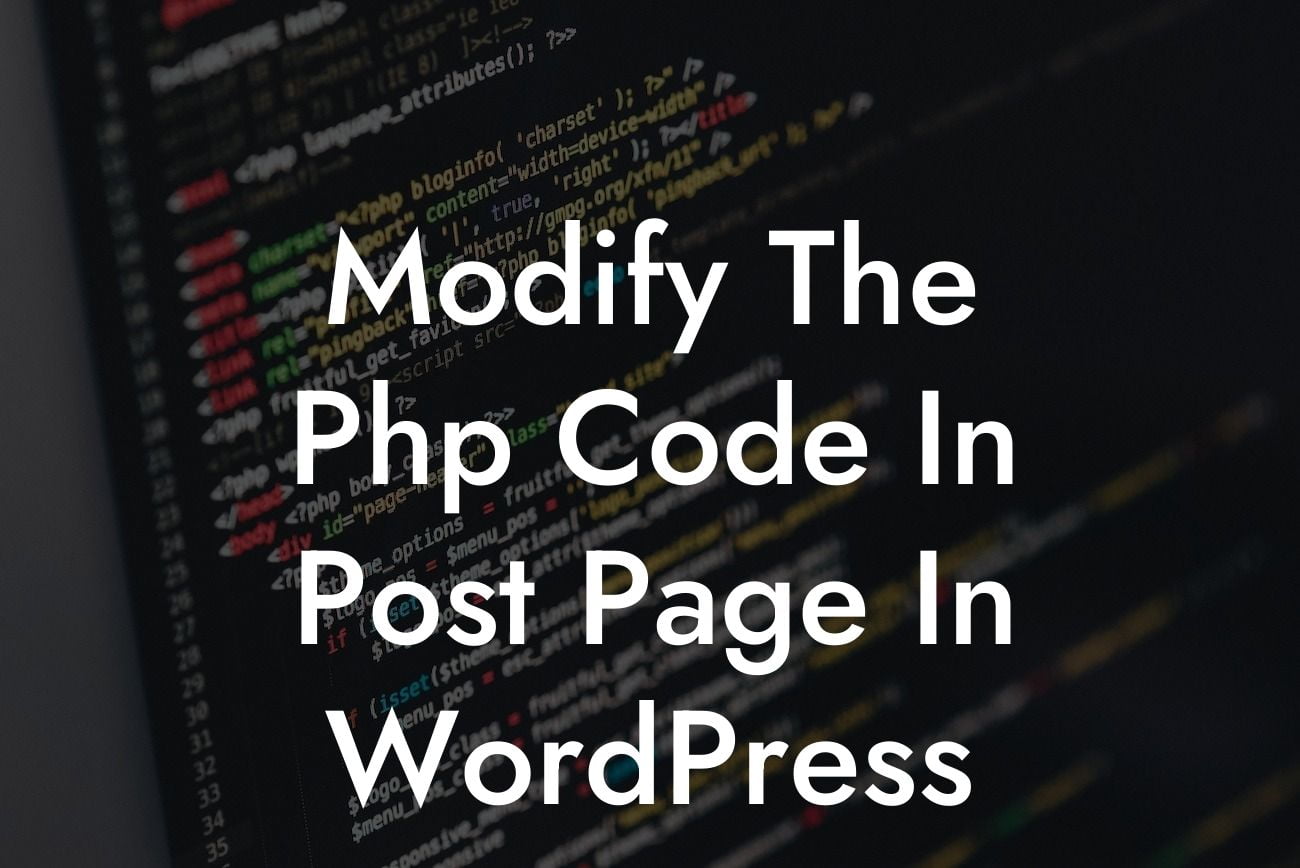Are you a small business owner or entrepreneur looking to enhance your WordPress website? One of the most powerful aspects of WordPress is the ability to modify the PHP code to customize and fine-tune your website to your specific needs. In this article, we delve into the process of modifying the PHP code in the post page of your WordPress site. Whether you're a beginner or an experienced developer, we've got you covered! Let's dive in!
Starting with the basics, let's understand what PHP code is and how it plays a crucial role in your WordPress website. PHP, which stands for Hypertext Preprocessor, is a server-side scripting language used to generate dynamic web pages. In the case of WordPress, PHP is responsible for rendering the content of your posts and pages.
To modify the PHP code in the post page, we need to access the file where all the magic happens - the 'single.php' file. This file controls the layout and structure of your individual post pages. But before we dive into the PHP code, it's essential to create a child theme. This will ensure that any modifications you make won't be lost during future theme updates.
Once you have set up your child theme and located the 'single.php' file, it's time to get hands-on with the PHP code. We recommend using a code editor like Notepad++ for a smoother experience. Within the 'single.php' file, you can customize various aspects, such as the placement of post metadata, the appearance of comment sections, and even the post title format.
To make it easier for you, let's explore three common modifications you might want to make:
Looking For a Custom QuickBook Integration?
1. Customizing Post Metadata:
If you want to display additional information about your posts, such as the author's name, date of publication, or categories, you can modify the PHP code responsible for post metadata. By adding suitable PHP functions and CSS styles, you can design a metadata section that aligns with your brand aesthetics perfectly.
2. Modifying Comment Sections:
The default comment section in WordPress might not match your preferences or requirements. With the ability to modify the PHP code, you have full control over the appearance and functionality of the comment section. You can add custom fields, incorporate social media logins, or even change the order in which comments are displayed.
3. Enhancing Post Title Format:
The way your post titles appear on the post page can greatly impact the user experience. By manipulating the PHP code, you can customize the post title format to include additional elements like the date, category, or any other dynamic content. This flexibility allows you to create a unique and engaging post page layout.
Modify The Php Code In Post Page In Wordpress Example:
Let's say you run a fashion blog and want to showcase the date of publication and the author's name at the beginning of each post. By modifying the PHP code in the 'single.php' file, you can add the necessary PHP functions to retrieve this information from your WordPress database and style it. This level of customization adds a personal touch to your posts, enhancing your brand image.
Congratulations! You've learned how to modify the PHP code in the post page of your WordPress website. By leveraging the power of PHP, you can create a truly unique and tailored experience for your audience. Don't stop here! Explore other guides on DamnWoo to discover more valuable tips and tricks to elevate your online presence. And why not try out one of our awesome WordPress plugins? They are designed exclusively for entrepreneurs and small businesses like yours, bringing extraordinary solutions to your fingertips. Share this article with others who might benefit from it and let's empower each other in the digital world!
Note: The content inside each section should be output in HTML with suitable H2, H3 headings tags, bullet point lists, and ordered lists where necessary.













